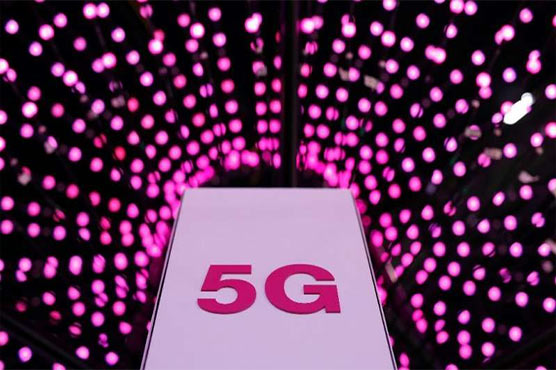5G: Five things to know

European Union and Britain indicated a conditional green light for 5G.
LONDON (AFP) - It is heralded as the breakthrough to a brave new world of technology, but in the here and now, super-fast 5G networking has been pitting the United States against China.
On Tuesday, the European Union and Britain indicated a conditional green light for Chinese telecoms group Huawei to take part in their 5G rollouts, despite a US ban on the company.
Here are five things to know about the next generation of telecommunications:
What is 5G?
It is the fifth-generation successor to today’s 4G technology, which is a decade old and struggling to keep pace with global broadband demand.
The rollout of 5G promises radically quicker transfers of data, heralding major changes to an array of products and services from self-driving cars to "telemedicine".
On the entertainment front, users will be able to download a high-definition movie in a few minutes compared to an hour or two now.
The market for streaming video games, a rapidly growing area, will get a huge lift, as will the "internet of things" -- domestic appliances, lighting and other at-home technologies connected and operated remotely.
It’s not just about speed of downloads and uploads; 5G brings much lower "latency" than 4G. That is the time lag between a command being sent by a user and a device acting on it.
In the real world, that brings into play the possibility of factory robots being operated remotely or surgeons operating on patients from far away using augmented reality glasses.
The most visible gain from lower latency could be with the widespread advent of self-driving cars. But these will need 5G networks to cover large areas, which is still some way off.
When’s 5G coming?
The technology is already in wide use in South Korea and for fixed internet lines in some US cities. It is also available in parts of Europe and Asia.
The global breakthrough -- widespread ultra-fast mobile networks on a par with 4G today -- is still in the works.
Japan and China are targeting this year for nationwide rollouts. The rest of Asia and Europe will follow over the decade.
But mobile communications industry body GSMA, which represents 800 operators worldwide, estimates 5G will account for just 15 percent of total global mobile connections in 2025.
As for 5G-enabled smartphones, Samsung and Huawei are among major brands already in the market, but Apple has yet to launch a compatible model.
Broad adoption by consumers depends on 5G networks spreading far enough, and for handhelds’ chips and other architecture to be capable of handling the added workload.
5G, give us a wave
Governments first need to harmonise standards for the award of so-called millimetre-wave (mmWave) spectrum, which will carry the vast data flows promised by 5G.
That high-frequency mmWave spectrum starts at about 30 gigahertz. In contrast, 4G networks operate at lower than 6 GHz.
That means not only ultra-fast broadband but also much greater bandwidth for many more users and devices to be connected to the network at the same time.
Who’s building it?
To bring the promised speeds to the masses, 5G requires a whole new infrastructure of masts, base stations and receivers.
Among the networking companies in the race are Huawei, Sweden’s Ericsson and Nokia of Finland. South Korean giant Samsung and China’s ZTE are other infrastructure players.
Huawei is the sector leader, and says it offers better technology at a lower cost. Critics say that is only possible because of Chinese state support, and suspicions about the company don’t stop there.
What’s the fuss?
The US government says Huawei -- founded by former Chinese army engineer Ren Zhengfei -- is a security risk and has urged allies including Britain to shun its equipment over fears it could serve as a Trojan horse for Chinese intelligence services.
President Donald Trump’s administration has effectively shut Huawei out of the US market. Others including Australia and Japan have followed in freezing the company out of their 5G development.
But most European countries have stuck by the Chinese company, which is already responsible for much of their 3G and 4G architecture.
The announcements in London and Brussels set the stage for more difficult conversations on transatlantic phone lines.

